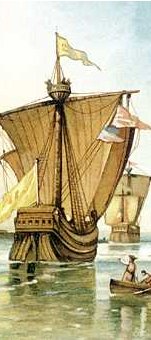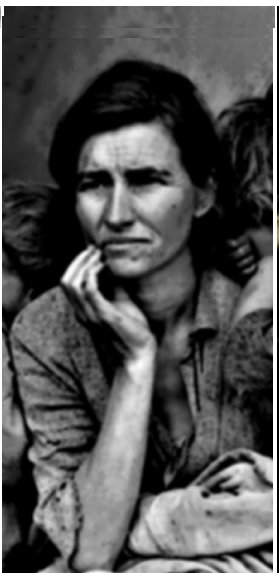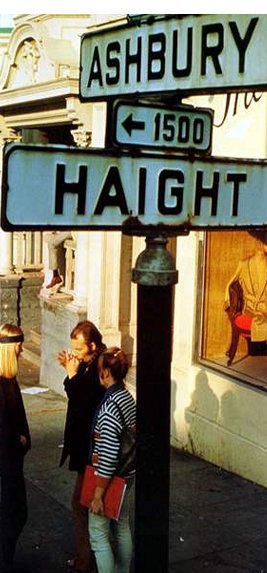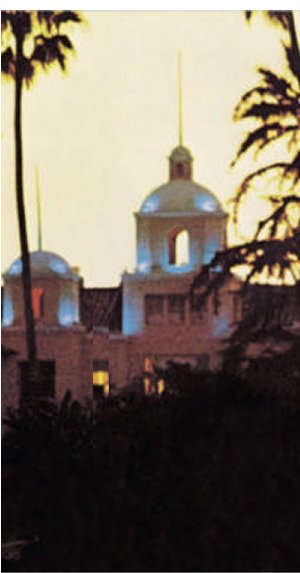Preserving California¡¦s
Treasures Margaret Chiu
Michael P. Cohen received
his Ph.D. in literature from the University of California at Irvine, and
presently teaches English at Southern Utah State College in Cedar City, Utah.
He spent ten seasons climbing in the Sierra Nevada, and is now a passionate fly fisherman in
the summer and a skier in the winter.
Cohen strove to carry Muir¡¦s nineteenth-century ideas into the twentieth
century, writing for the preservation of the mountains and to promote
ecological consciousness in America.
Michael P. Cohen¡¦s The Pathless Way: John Muir and American
Wilderness details the intellectual and spiritual evolution of
pioneering environmentalist John Muir.
Though ground in biographical fact, Cohen¡¦s study focuses not only on
names and dates, but assumes the shape of a spiritual journey that traces
Muir¡¦s developing thought, his enlightenment in the Sierra
Mountains and Yosemite
Valley, and his attempt to translate transcendental convictions
into effective public appeal and political strategy. Cohen ultimately lays emphasis on Muir¡¦s
progression from individual enlightenment to civic action: the result is an
extensive campaign that stresses the ecological education of the American
public, government protection of natural resources, the establishment of
National Parks, and the encouragement of tourism in California. Within his analysis of Muir¡¦s move from
private amusement to civic call to action, Cohen suggests that Muir sacrificed
some of his original values and practices for the sake of public appeal. If, as Cohen suggests, Muir¡¦s
anthropocentric public positions sometimes compromised his early, purer
principles, the larger vision nevertheless subsisted. It was the original belief that ¡§¡¥No
temple made with hands can compare with Yosemite¡¦¡¨ that
would remain, to the end, the inviolable, cherished, and consuming core of
Muir¡¦s life and thought.1
From the first
chapter, Cohen¡¦s account of Muir¡¦s life centers on his intellectual and
spiritual questioning of human existence.
Cohen characterizes Muir as one who stood at a cultural crossroads
between ¡§Franklinian practicality and a distinctively
American mysticism.¡¨2 On one hand, Muir was characterized by
inventive genius and a constant desire to find ways to maximize efficiency on
the farm. He hoped his work with
practical machinery and his knack for finding cheaper and more cost-effective
ways of producing goods was philanthropic to man. On the other hand, Muir¡¦s ecological
consciousness was already a nascent characteristic. He claims, ¡§One of the greatest
[advantages of farm life] is¡K gaining a real knowledge of animals as
fellow-mortals, learning to respect them and love them, and even to win some of
their love.¡¨3 Employing the ¡§machine¡¨ and ¡§flower¡¨ metaphors, Cohen
charts Muir¡¦s transformation from the young mechanical genius to the mature
philosopher of nature. He
identifies Muir¡¦s internal struggle with the opposing forces of scientific
technology and Biblical spiritualism.
Work with machinery led Muir to spiritual self-conflict¡Xthe machine
suggested that the world and God¡¦s Creation was a perfect clockwork mechanism,
and perfection was, in turn, attainable by man and his technology. The study of science drove Muir
from God towards modern humanism, the belief that human problems are wholly
soluble by people through technological or social means. In 1860, Muir took his inventions to the
state fair at Madison, where he
gained admiration and prizes¡Xand more importantly, a friendship with Ezra and
Jeanne Carr. Active Grangers, the Carrs believed in an agrarian future for the West,
practical education, and professional training for women. Despite being followers of reason and
science, Ezra and Jeanne Carr brought Muir back to the Bible and taught him to
strike a balance between the intellectual and the spiritual, a concept central
to Muir¡¦s future work with nature.
Breaking from his initial identity
as machine inventor, Muir gradually shed his obsession with ¡§man¡¦s work¡¨ and
technology. At this time, Muir
began to notice Nature¡¦s grandeur in comparison to artificial, cultivated
plants. Progressively alienating
himself from society, Muir began to take interest in the study of nature,
namely botany and geology. While a
student at the University of Wisconsin,
Muir took his first
botany lesson. A fellow student plucked a flower from a tree and used it to
explain how the grand locust is a member of the pea family, related to the
straggling pea plant. Fifty years later, the naturalist Muir described the
monumental day in his autobiography: ¡§This fine lesson charmed me and sent me
flying to the woods and meadows in wild enthusiasm.¡¨4 But instead of graduating
from a school built by the hand of man, Muir opted to enroll in what he called
the ¡§university of the wilderness¡¨ and thus walked
a thousand miles from Indianapolis
to the Gulf of Mexico. This first trek, reflecting his
earlier mindset of practicality, was meticulously planned and parceled into
multiple journeys between major cities; however, Muir¡¦s later journey through California
reflects a drastic internal evolution¡Xthis route was a radical escape from
cities and main routes of travel. Arriving in San Francisco in
March 1868, Muir immediately left for a place he had read about called
Yosemite. He was captivated by Yosemite
Valley¡¦s grandeur and plant wealth.
From that moment on, though Muir would travel the world, California
became his home. It was this
first enlightenment in Yosemite Valley in the summer of
1872, Cohen claims, that represents both the climax of Muir's intensely
personal search for self-knowledge and the enduring foundation of his
ecological consciousness. Giving
himself up to the experience of wilderness with all the discipline and
devoutness of a religious pilgrim, Muir came to embody the very meaning of his
vision in the mountains of California.
Reeducating himself in geology, natural history,
evolution, and aesthetics with texts such as those of Agassiz
and Asa Gray, Muir felt that for the first time, his
education was being applied.
However, he gradually developed his own method of study that revolved
around observation of nature, not adherence to men¡¦s theories.
Ultimately, Cohen emphasizes,
Muir¡¦s ecological consciousness would generate an ecological conscience. It was
no longer enough for Muir to individually test and celebrate his enlightenment
in the wild. His vision, he felt, must lead to concrete action. With the growing number of livestock in the Sierras, Muir
realized that much damage was being inflicted upon the Sierra grasslands. Throwing himself into his new role of
preservationist with great vigor, Muir turned more seriously to writing, using
it as a vehicle to expound his philosophy and the grandeur of California
to audiences on the East Coast. For
example, Muir wrote a series of letters for San Francisco Bulletin between 1874 and1878; though these
moderate writings might seem like tourist-trade material, they were effective
in speaking to the most general audiences.
Muir had correctly predicted that while a path of moderation was not the
best way to a true vision of nature, moderate articles would bring urban
tourists. In his narrative Picturesque
California, Muir provided his readers with a safe and comfortable place to
appreciate Nature. Cohen claims
that in creating a comfortable distance between Muir¡¦s readers and the actual
wilderness, Muir sacrificed his earlier values and ¡§fairly drenched the reader
in the language of artifice.¡¨5 Using anthropocentric and fashionable
language popular to East Coast readers and press, Muir recognized, was the only
way to captivate the public¡¦s attention and alert them about the precarious
state of Yosemite. Muir additionally took the role of
tour guide more seriously; becoming more than just an entertainer, he attempted
to radically recreate public attitudes about the wilderness, thus laying the
groundwork for an ecological conscience in 19th century America.
The major turning point in Muir¡¦s
career as a preservationist came in June 1889. Camping in Tuolumne Meadows with the influential associate
editor of Century
magazine, Robert Underwood Johnson, Muir showed him firsthand the damage a
large flock of sheep had done to the grassland. This action earned Muir Johnson¡¦s
valuable endorsement¡XJohnson agreed to publish any article Muir wrote on the
subject of excluding livestock from the Sierra high country. While Johnson held ¡§anthropocentric
view[s]¡¨ that showed his ¡§distance from Muir¡¦s appreciation of the wholeness of
Nature,¡¨ the alliance between the two became an important model of the balanced
relationship between tourist and guide.6 Johnson also agreed to use
his influence to introduce a bill to Congress to make the Yosemite area into a
national park, modeled after Yellowstone National Park. Through a series of articles
appearing in Century magazine, Muir drew attention
to the devastation of mountain meadows and forests by sheep and cattle. With
the help of Century,
Muir worked to remedy this destruction.
In 1890, due in large part to the efforts of Muir and Johnson, an act of
Congress established Yosemite National
Park.
While Cohen praises Muir¡¦s
successes with the national park system, he maintains that in the process of
converting the public and Congress to preservationism,
Muir disappointingly surrendered some of his key values. As an emerging political man, Muir found
success by ¡§taking a pose and speaking a language his audience wanted to hear.¡¨7
Soon after the creation of Yosemite National Park, Johnson proposed that Muir
help form an organization on the West coast which would serve as a defense
association to watch over and protect Yosemite from the assaults of stockmen
and others who would diminish its boundaries. In 1892, Muir and a number of his
supporters founded the Sierra Club.
Different from other environment groups, such as the Forestry
Association of the 1970¡¦s and the Civic Improvement Leagues of the East Coast,
the Sierra Club paved the way for a newly distinct and identifiable character
of the Muir-led preservationist movement.
The majority of the members of the Sierra Club were from the Bay Area,
well educated, part of the middle class, and urban in outlook. To these citizens, the outdoors and
mountains were places for vacation; thus, the Sierra Club developed secular over
spiritual aims, and sought to preserve the forests and other natural features
of the Sierra for purely recreational purposes. Despite the fact that the Sierra Club
was truly effective as a trailblazer in the wilderness, something central to
Muir¡¦s philosophy was lost as the preservation movement took on an
institutional form and worldly objective.
Cohen states clearly in his
introduction that The Pathless Way is not a standard biography; rather,
it is an analysis of John Muir¡¦s intellectual and spiritual journey. Through the compilation of this thorough
account of Muir¡¦s psychological struggle, Cohen also often criticizes Muir¡¦s
actions. According to him, Muir was
much less successful as a preservationist than as a naturalist. This judgment is nonetheless fair and
does not reflect badly on Muir. In
the words of David Rains Wallace¡¦s New York Times critique, ¡§Considering
[Muir]¡¦s enemies¡Xcities; farm, logging, and livestock interests; government
bureaucracies¡Xand the dubious loyalty of conservationist allies, his part in
creating a number of national parks and the Sierra Club still seems
impressive.¡¨8 Cohen rightfully criticizes Muir for sliding away from
his original vision of attaining harmony with nature, an aspiration he came
close to accomplishing in his earlier years as a naturalist. Wallace applauds Cohen¡¦s portrayal of
Muir, calling his account ¡§perceptive¡¨ and ¡§thorough.¡¨9
Himself a mountaineer who spent extensive time in the Sierra Nevada, Cohen
is clearly an expert in this field; however, this shared interest with Muir is
a factor in both the chief strengths and one of the main weaknesses of this
book. Despite the credibility of
Cohen¡¦s sources, his thoughts are not wholly convincing. Because this book focuses on the
spiritual journey of Muir¡¦s character, Cohen dramatically emphasizes Muir¡¦s
internal conflict and psychological struggle, describing environmental and
political issues as ¡§prey[ing] on his conscience.¡¨10
In addition, Cohen, as a fellow naturalist and lover of mountains, shows an
obvious bias in his biographical narrative¡Xalthough he somewhat condemns Muir
for being artificially over-optimistic, he himself romanticizes and idealizes
Muir¡¦s character, perpetuating the genial, picturesque nature-guide identity
favorable to the public. A look at
other biographies, such as Stephen R. Fox¡¦s John Muir and His Legacy,
reveals that Muir was a much more radical, shrewd, and divided man than the
image Cohen portrays. 10
Furthermore, while the injection of
Cohen¡¦s own thoughts into the narrative are mostly insightful and a provide nice change from the typical fact-laden biography,
often the reader will tire of reading Cohen¡¦s marvelous first-hand accounts and
pompous anecdotes. As Roderick Nash
concludes in his critique, ¡§It is clear after only a few minutes that The
Pathless Way is as much about Cohen as about John Muir,
and Cohen does not disguise that fact.¡¨11 Writing of his own
experiences climbing the very peaks that Muir scaled one hundred years ago,
Cohen writes, ¡§I have been there perhaps twenty times, once on the centennial
of Muir¡¦s ascent, when the clouds sailed through the mountains, riding the west
wind. Each day on the Cathedral
Park that I remember seems sacred.¡¨12
This statement, as well as Cohen¡¦s many others of the same voice and purpose,
seems to be Cohen¡¦s showy verification or stamp of approval of Muir¡¦s opinions.
While movements associated with the
wilderness of the West and California¡¦s
frontier, preservation and John Muir¡¦s national park campaign were wholly
influenced by events occurring in the Eastern United States. Muir knew he had to appeal to the
wealthy families living in the metropolises of the East Coast in order to gain
influence with the public and the government¡Xwriting Picturesque California,
Studies in the Sierra, and Century magazine were a few of Muir¡¦s
vast efforts to establish a friendly and welcoming connection between the West
and the East. The ¡§bond between the
eastern reader and the narrator of Muir¡¦s essays of the early nineties¡¨ was the
single driving force that could perpetuate the preservation movement.13
Additionally, with the completion of the
Transcontinental Railroad in 1869, tourism and vacationing were gradually
becoming popular recreational activities among Eastern American families. Muir¡¦s movement for preservation of
nature and establishment of national parks utilized this Eastern social trend
to draw attention to the situation in California.
Once isolated from the rest of America
by the Sierra Nevadas, California,
with the work of John Muir, became most well known and treasured for that exact
mountain range. Events in the late
nineteenth and early twentieth centuries reflected a changing American
society. One tragic yet
enlightening example is the debate over Hetch Hetchy Valley of Yosemite National Park in 1913. California¡¦s
Hetch Hetchy Valley
had been one of the most attractive spots in California¡¦s
Sierras, but when officials of San Francisco
visited the region, they saw merely a cheap solution to their city¡¦s serious
water problems. When, after a long
fight that polarized the nation, the Tuolumne
River was dammed to create a
reservoir for San Francisco, much
wild grandeur was sacrificed and the shoreline became marred by mud and
decaying vegetation. Despite this
severe loss, Cohen points out that the struggle had a larger meaning: for the
first time, over a five-year period, the American public debated the aesthetic
implications of a major public works project. The Hetch Hetchy political battle was a turning point in which America
began ¡§moving with tremendous momentum away from its
Jeffersonian conscience¡K¡¨14 Wilderness preservation was, for
the first time, on the public agenda, and California
was suddenly more than a distant strip of uncharted wilderness.
Cohen¡¦s
meticulous examination of John Muir reflects his personal experience with and
extensive knowledge of the continuing efforts to preserve the Sierra
Nevada and Yosemite Valley. In The Pathless Way, Cohen
explores and provides profound insight on Muir, on Cohen¡¦s ¡§own thinking¡K the
thinking of a whole community¡K [and] generation.¡¨15
More than simply a biography of John Muir, and more than a mere description of
an important movement in California
history, Cohen¡¦s narrative boldly combines critiques
of Muir¡¦s ethics and accolades of his monumental accomplishments. By clarifying this balance and outlining
his central consciousness as both naturalist and preservationist, Cohen
illuminates Muir, his movement, and the magnetism of his beloved
mountains.
1. Muir, John. A Thousand-Mile Walk to the Gulf. New York:
Houghton Mifflin Company, 1916.
2. Salzman, Jack. American Studies: An Annotated Bibliography 1984-1988. New York: Cambridge University Press, 1990.
3. Tolan, Sally. John Muir. Milwaukee:
Gareth Stevens, Inc., 1990.
4. Muir, John. The Wilderness World of John Muir. New York:
Houghton Mifflin Company, 2001.
5. Cohen, Michael. The Pathless Way: John Muir and
American Wilderness. Madison: University
of Wisconsin Press, 1984, 241.
6. Cohen, Michael 257.
7. Cohen, Michael 280.
8. Wallace, David Rains. ¡§He Rode the Avalanches.¡¨ New
York Times September 16, 1984.
9. Wallace, David Rains.
10. Fox, Stephen.
John Muir and His Legacy. Madison:
University of Wisconsin
Press, 1986.
11. Nash, Roderick. ¡§The Pathless Way: John Muir and American
Wilderness.¡¨ The American Historical Review. 90
(1985): 761.
12. Cohen, Michael 359.
13. Cohen, Michael 257.
14. Cohen, Michael 328.
15. Cohen, Michael xiii.





















